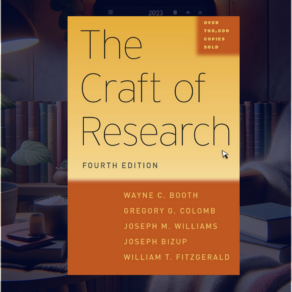In this post, we will discuss the concept of quantitative research as viewed through the lens of various esteemed authors. The aim is to provide a holistic view of this research method, focusing particularly on guiding beginner researchers and graduate students towards seminal works that offer invaluable insights into the field.
Quantitative research is a pivotal aspect of academic inquiry, and understanding its fundamentals is crucial for anyone venturing into the realm of research. We’ll explore the definitions and perspectives of quantitative research according to John Creswell, along with other notable scholars in the field. These insights are not only foundational for grasping the essence of quantitative research but also serve as a beacon for those navigating the often-complex landscape of academic research methodologies.
Related: 12 Good Books on How to Write and Publish Research Papers
What is Quantitative Research According to Authors?
Here are some key definitions of quantitative research according to different scholars:
1.Quantitative Research According to John Creswell
Creswell (2014) defines quantitative research as :
an inquiry into a social or human problem, based on testing a theory composed of variables, measured with numbers, and analyzed with statistical procedures, in order to determine whether the predictive generalizations of the theory hold true. The final written report has a set structure consisting of introduction, literature and theory, methods, results, and discussion. Like qualitative researchers, those who engage in this form of inquiry have assumptions about
Creswell, J. W. (2014). Research design: Qualitative, quantitative, and mixed methods approaches. Thousand Oaks, CA: SAGE Publications.
testing theories deductively, building in protections against bias, controlling for alternative or counterfactual explanations, and being able to generalize and replicate the findings. (p. 4)
To elaborate, Creswell’s definition highlights key aspects of quantitative research, emphasizing its focus on testing objective theories by examining relationships among variables. In this approach, variables are measurable and quantifiable, allowing researchers to gather numerical data that can be systematically analyzed using statistical methods.
Quantitative research is grounded in a positivist paradigm, which assumes that there is an objective reality that can be measured and understood through empirical observation. By employing standardized and structured instruments, such as surveys and experiments, researchers seek to minimize subjective biases and ensure the reliability and validity of their findings.
The process typically involves the formulation of specific hypotheses derived from existing theories, which are then tested through the analysis of data. This deductive approach enables researchers to confirm, refute, or refine their theoretical assumptions based on empirical evidence.
Statistical procedures play a crucial role in quantitative research, as they help identify patterns, trends, and relationships among variables. Descriptive statistics provide an overview of the data, while inferential statistics allow researchers to make generalizations from their sample to the broader population.
In summary, Creswell’s definition of quantitative research emphasizes its objective nature, the examination of relationships among measurable variables, and the use of statistical procedures for data analysis. This approach is instrumental in generating evidence-based insights, informing decision-making processes, and advancing knowledge across various fields.
For more, check out this detailed post titled What is Quantitative Research According to Creswell?
Quantitative Research According to Punch
Punch (1998) contrasts quantitative research with qualitative research stating that the earlier represents “empirical research where the data are in the form of numbers” and the latter represents an “empirical research where the data are not in the form of numbers” (p. 4).
As you can see, Punch’s definition of quantitative and qualitative research provides a straightforward distinction between the two methodologies based on the type of data collected.
Quantitative research, as Punch defines it, relies on numerical data. This approach allows for precise measurements, statistical analysis, and the identification of patterns, trends, and relationships among variables.
Quantitative research, as I stated earlier, is often grounded in the positivist paradigm, which assumes an objective reality that can be studied and understood through empirical observation. Examples of quantitative research methods include surveys, experiments, and structured observations.
On the other hand, qualitative research focuses on non-numerical data, such as words, images, or actions. This approach aims to capture the complexity and richness of human experiences and social phenomena.
Qualitative research is often rooted in the interpretivist or constructivist paradigm, which acknowledges that reality is subjective and co-constructed by individuals through their experiences and interpretations. Examples of qualitative research methods include interviews, focus groups, ethnography, and content analysis.
In summary, Punch distinguishes quantitative and qualitative research based on the nature of the data collected, with the former involving numerical data and the latter focusing on non-numerical data. This distinction reflects the different epistemological assumptions, research methods, and analytical approaches employed in each methodology.
3.Quantitative Research According to Leavy Patricia
According to Leavy Patricia (2022), Quantitative research :
“values breadth, statistical descriptions, and generalizability. Quantitative approaches to research center on achieving objectivity, control, and precise measurement. Methodological, these approaches rely on deductive designs aimed at refuting or building evidence in favor of specific theories and hypotheses. Marianne Fallon (2016) refers to quantitative research as a ‘top down process’ (p. 3). Quantitative approaches are most commonly used in explanatory research investigating causal relationships, associations, and correlations.” (p. 99)
Patricia, L. (2022). Research Design: Quantitative, Qualitative, Mixed Methods, Arts-Based, and Community-Based Participatory Research Approaches. Guilford Publications.
In this excerpt, Leavy (2022) characterizes quantitative research as an approach that values breadth, statistical descriptions, and generalizability. The focus of quantitative research is on achieving objectivity, control, and precise measurement, which is achieved through the use of structured and standardized methods. This approach is grounded in a deductive research design, which starts with theories and hypotheses that are then tested and validated or refuted based on empirical evidence.
Fallon (2016, cited by Leavy) describes quantitative research as a “top-down process” (p. 3), which emphasizes the importance of established theories and prior research in guiding the formulation of new hypotheses. This approach allows researchers to build upon existing knowledge and refine theoretical frameworks.
Quantitative research is particularly well-suited for explanatory research, as it seeks to uncover causal relationships, associations, and correlations among variables. By employing rigorous sampling techniques and statistical analyses, quantitative researchers can identify patterns and relationships in the data, which can then be generalized to the broader population.
In conclusion, Leavy (2022) highlights the key aspects of quantitative research, emphasizing its focus on breadth, statistical descriptions, generalizability, objectivity, control, precise measurement, and explanatory power. This approach provides valuable insights into causal relationships and associations, contributing to the advancement of knowledge across various fields.
4.Quantitative Research According to Kothari
Let me share with you this lengthy passage by Kothari (2004) explaining quantitative research. According to Kothari (2004), quantitative research:
involves the generation of data in quantitative form which can be subjected to rigorous quantitative analysis in a formal and rigid fashion. This approach can be further sub-classified into inferential, experimental and simulation approaches to research. The purpose of inferential approach to research is to form a database from which to infer characteristics or relationships of population. This usually means survey research where a sample of population is studied (questioned or observed) to determine its characteristics, and it is then inferred that the population has the same characteristics. Experimental approach is characterised by much greater control over the research environment and in this case some variables are manipulated to observe their effect on other variables. Simulation approach involves the construction of an artificial environment within which relevant information and data can be generated. This permits an observation of the dynamic behaviour of a system (or its sub-system) under controlled conditions. The term ‘simulation’ in the context of business and social sciences applications refers to “‘the operation of a numerical model that represents the structure of a dynamic process. Given the values of initial conditions, parameters and exogenous variables, a simulation is run to represent the behaviour of the process over time.” Simulation approach can also be useful in building models for understanding future conditions. (p. 5)
Kothari, C. R. (2004). Research Methodology: Methods & Techniques. New Age International.
Kothari (2004) provides a comprehensive overview of quantitative research, emphasizing its focus on generating data that can be subjected to rigorous quantitative analysis in a formal and rigid manner. The author further categorizes quantitative research into three sub-approaches: inferential, experimental, and simulation.
1. Inferential approach: This approach is commonly used in survey research, where a sample of the population is studied to determine its characteristics. Researchers then infer that the larger population shares these characteristics. The goal is to understand the population’s characteristics or relationships based on the analyzed data from the sample.
2. Experimental approach: This approach is characterized by greater control over the research environment, where variables are manipulated to observe their effects on other variables. Experimental research is used to establish cause-and-effect relationships and often involves controlled settings and random assignment of participants to different conditions.
3. Simulation approach: This approach entails creating an artificial environment to generate relevant data and observe the dynamic behavior of a system or its sub-systems under controlled conditions. In the context of business and social sciences, simulation refers to the operation of a numerical model representing the structure of a dynamic process. This approach helps in building models for understanding future conditions and predicting potential outcomes.
In summary, Kothari (2004) delineates quantitative research as a method that generates and analyzes data in a systematic, rigorous manner, further sub-dividing it into inferential, experimental, and simulation approaches. Each sub-approach offers unique insights and techniques for understanding various aspects of the phenomena under investigation.
5. Quantitative Research According to Williams, Malcolm, et al.
Williams et al. (2022) define quantitative research as:
investigations in which the data that are collected and coded are expressible as numbers. By contrast, studies in which data are collected and coded as words would be instances of qualitative research. Weightier distinctions have also been important in discussions of research methods – distinctions bordering on epistemologies, worldviews and ontologies, to name a few… Quantitative research is grounded in the scientific tradition, so description and inference with the potential to lead to causal explanation and prediction are its core business. Its methods are those of the experiment, the social survey or the analysis of official statistics or naturally occurring data. It can take many forms from a local neighbourhood survey to large-scale population surveys with several thousand people taking part. It may be a carefully controlled experiment in a laboratory, or it might be ‘big-data’ analysis of millions of Twitter feeds. (p. 3)
Williams et al. (2022). Beginning Quantitative Research. SAGE Publications, Limited.
In this passage, Williams et al. (2022) provide a rule-of-thumb definition of quantitative research as investigations where the collected and coded data can be expressed as numbers, while qualitative research deals with data collected and coded as words. The authors acknowledge that more profound distinctions exist, touching upon epistemologies, worldviews, and ontologies.
Quantitative research is rooted in the scientific tradition, focusing on description and inference, with the potential to lead to causal explanation and prediction. The methods employed in quantitative research include experiments, social surveys, and the analysis of official statistics or naturally occurring data.
The scope of quantitative research can vary widely, from small-scale neighborhood surveys to large-scale population studies involving thousands of participants. It can also encompass controlled experiments in laboratories or the analysis of vast amounts of data, such as millions of Twitter feeds, commonly referred to as “big data.”
In summary, Williams et al. (2022) highlight the numerical nature of quantitative research and its grounding in the scientific tradition. This approach aims to describe, infer, and potentially explain causal relationships and make predictions using various methods, ranging from small-scale surveys to large-scale big data analysis.
Conclusion
After examining the various definitions of quantitative research provided by different scholars, we can conclude that quantitative research is a systematic and empirical approach to investigating phenomena, which is grounded in the scientific tradition and positivist paradigm. The key aspects of quantitative research include:
1. The collection and analysis of numerical data, often obtained through structured and standardized methods, such as surveys, experiments, or analyzing naturally occurring data.
2. A focus on objectivity, control, precision, generalizability, and the establishment of cause-and-effect relationships, associations, or correlations.
3. The use of deductive reasoning, where research begins with theories and hypotheses that are then tested and validated or refuted based on empirical evidence.
4. The employment of statistical procedures to analyze data, identify patterns, trends, and relationships, and make inferences or predictions about the broader population.
Quantitative research plays a vital role in advancing knowledge across various fields by providing evidence-based insights, informing decision-making processes, and building upon existing theories.
While the definitions and perspectives provided by different scholars may emphasize specific aspects of quantitative research, they all converge on its core characteristics, including the systematic collection and analysis of numerical data, the pursuit of objectivity and generalizability, and the reliance on statistical procedures for data interpretation.
References
- Creswell, J. W. (2014). Research design: Qualitative, quantitative, and mixed methods approaches. Thousand Oaks, CA: SAGE Publications.
- Kothari, C. R. (2004). Research Methodology: Methods & Techniques. New Age International.
- Patricia, L. (2022). Research Design: Quantitative, Qualitative, Mixed Methods, Arts-Based, and Community-Based Participatory Research Approaches. Guilford Publications.
- Punch, K. F. (1998). Introduction to social research: Quantitative and qualitative approaches. Thousand Oaks, CA: SAGE Publications.
- Williams, et al. (2022). Beginning Quantitative Research. SAGE Publications, Limited.
Two other interesting works to consider are:
- Tashakkori, A. & Teddlie, C. (2009). Integrating Qualitative and Quantitative Approaches to Research. In Bickman,l. & Debra J. Rog. (Eds.). The SAGE Handbook of Applied Social Research Methods. SAGE Publications, Inc.
- O’Leary, Z. (2009) The Essential Guide to Doing Your Research Project. London: Sage
- 8 Good Books on Quantitative Research, Selected Reads









